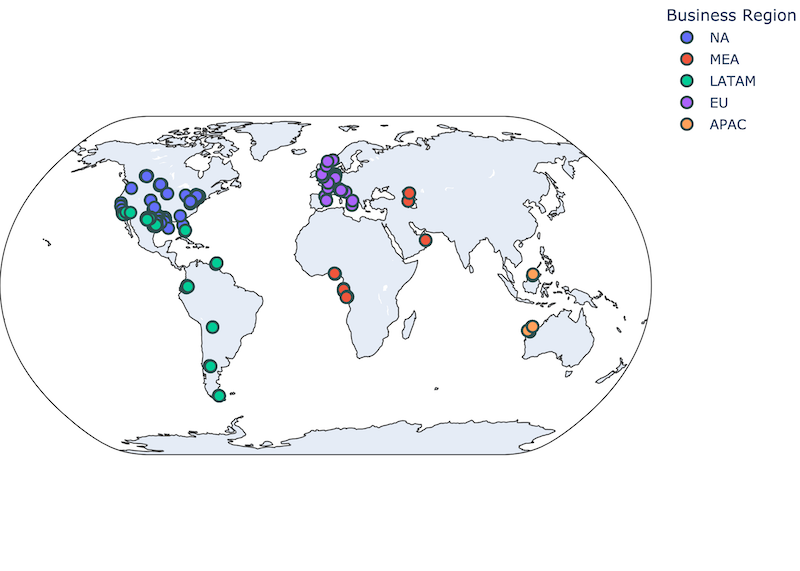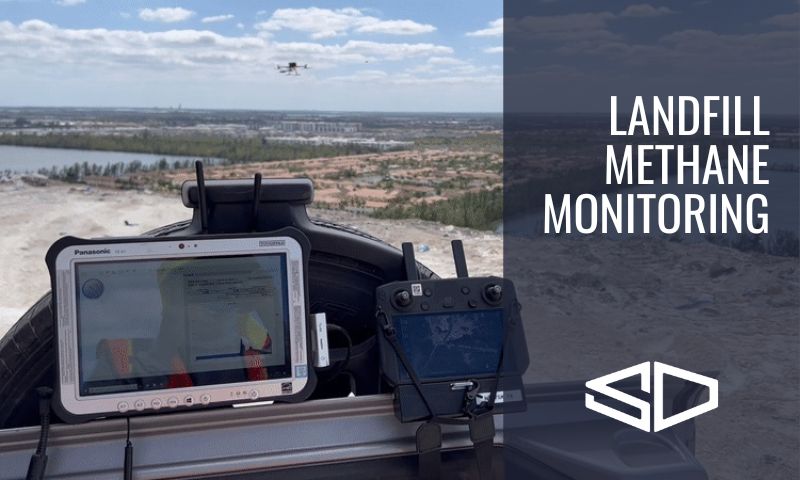You might be surprised to know that landfills are a perfectly hospitable ecosystem for life. The phrase “one person’s trash is another person’s treasure” has never been more appropriate when considering the microbiological paradise created from organic, human waste.
In a typical landfill, organic waste such as food scraps and paper decompose and release methane gas. This gas is flammable, so it must be vented from the landfill to avoid explosions. The process of decomposition is driven by bacteria that thrive in the anaerobic (oxygen-less) conditions of the landfill.
These bacteria break down complex organic molecules into simpler ones that can be used as food by other organisms in the ecosystem. In this way, a single banana peel can end up feeding countless creatures over its time in the landfill!
This cycle of breaking down and recycling organic matter is essential for life on Earth. It’s estimated that every year, microorganisms living in landfills recycle about 1 billion tons (900 million metric tons) of carbon – that’s nearly 20% of what the United States emits annually.
What is landfill gas?
The decomposition of organic waste creates ‘landfill gas’ – largely made up of methane and other greenhouse gases. Methane is a powerful, climate-warming greenhouse gas that is around 30 times more potent than carbon dioxide over a 100-year period.
How is methane used at landfills?
The methane that makes up landfill gas is considered renewable – it is created without the use of non-renewable fossil fuels. This methane, colloquially referred to as Renewable Natural Gas (RNG), can be used just like typical natural gas – as fuel for energy production, to heat homes, or power Compressed Natural Gas (CNG) vehicles.
RNG can be used in a number of ways:
- Generating electricity in a gas-fired power plant
- Scrubbed and used as fuel for natural gas vehicles
- Supplying pipeline-quality natural gas to homes and businesses
What are some benefits of using RNG?
Landfill sites that offer RNG production can create a valuable resource out of something that has otherwise been sitting unused. In terms of air quality, burning RNG is much cleaner than burning fossil fuels. An overall reduction in total methane emissions can help to mitigate climate warming since RNG is derived from captured methane that would have otherwise been vented to the atmosphere. Its increased use can help improve local air quality by reducing emissions of other pollutants.
RNG offers a number of benefits over traditional fossil fuels:
- RNG is a cleaner burning fuel, both lowering the abundance of atmospheric methane and emitting fewer harmful particulates than coal or oil when used to generate electricity.
- Using RNG can displace the use of non-renewable fossil fuels, helping to reduce our reliance on these limited resources.
- Producing RNG can create jobs and economic activity at landfill sites
Many operators have already realized this and implemented gas collection wells to capture the vented gas.
Why methane emissions from landfills need to be measured
The scale of landfill methane emissions
According to the Environmental Protection Agency (EPA), landfills make up almost 17% of methane emissions in the United States (see page ES-13 of the latest GHG Inventory Report). That’s about the same environmental impact as 110 million metric tons of carbon dioxide, or 23.5 million more cars on the road. If a single person were responsible for this environmental impact, it would look like one person driving an average gasoline-powered car 271 billion miles (which is like driving around the world 11 million times)!
A way to make methane from landfills useful
While this does qualify landfills as super emitters, it also presents an opportunity by way of RNG. What would have otherwise been flared or worse released into the atmosphere can instead increase revenue for landfills and also offer social gains.
The federal government recently put a price tag on the social cost of carbon dioxide emissions of $51 per metric ton. This makes landfill methane a socially-shared burden of nearly $5.6 billion US dollars.
The solution to landfill methane measurement
In order to turn landfill gas into RNG, it’s first important to find a solution that can accurately detect and quantify the amounts of methane emitted from landfills. There is also the need to monitor these emissions on the right time scale.
Since landfills are active living biomes, their emissions change daily with newly added waste and weather conditions. An automated solution can efficiently address this problem and benefit the environment and people living near the landfills.
Methods of landfill methane measurement
A variety of methane abatement strategies exist, but all include measurement and reporting. Some measurement technologies, like fixed monitors and OGI cameras assess emissions by making continuous measurements of fugitive methane. However, those technologies are limited because the sensors are at fixed locations and require methane to pass through them to be detected. Changing wind conditions can lead to large uncertainties when using this technology alone.
Satellites can measure snapshots of larger emissions of methane that are then aggregated over long periods of time. However, due to the nature of low-earth orbit and costly revisit times, monitoring is infrequent and limited by the weather conditions at the sites. Additionally, spatial resolution limitations make distinguishing emissions from active burial regions and waste-in-place regions nearly impossible. Fugitive emissions originating from gas collection wells and upgrading systems will remain ambiguous for landfill operators.
Lidar mounted on aircraft measures column-integrated methane concentrations. Local wind measurements or synthetic modeled wind data help to map these concentrations to a source and convert to an emission rate. However, aircraft themselves have GHG emissions and a larger carbon footprint than UAV. They also have coarse resolution making localization difficult for optimizing well placement on landfills. Scheduling and planning flights can be another difficult obstacle faced by large aircraft monitoring solutions.
The last method of methane measurement can characterize vertically resolved concentrations of methane in a way that is both flexible and timely. A sensor that uses Tunable Diode Laser Absorption Spectroscopy (TDLAS) has been developed by SeekOps, Inc. and is mounted on small UAVs.
UAVs offer many advantages for methane sensing. They are lower cost, have shorter deployment times, and can fly in areas that are difficult or dangerous for manned aircraft. In addition, the data they collect is high-resolution and can be rapidly analyzed to provide actionable insights.
A summary of some of the commonly assessed pros and cons of existing technologies offering methane mass flow quantification is shown in Table 1 below.
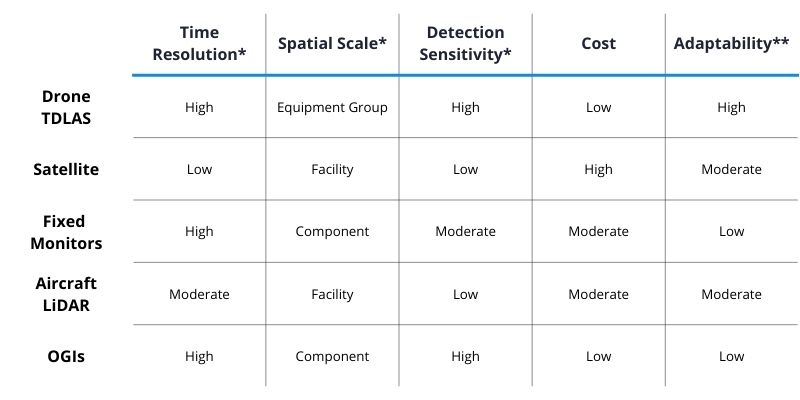
SeekOps’ unique solution to quantifying methane gas at landfills
SeekOps monitors active methane sites throughout the country. At a recent site they were able to identify methane emissions that could have been making the site ~$30,000 per day in RIN credits (See case study in Figure 1). In this way, accurately measuring methane used for landfill RNG products is a win-win for both the landfill and the environment.
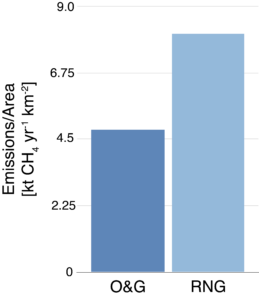
An industry that has been an early adopter in quantifying methane is oil & gas. While the potential for methane mitigation and efficient energy production from oil & gas sites is great, the potential benefit from landfill sites is larger. RNG projects from landfills will have a huge impact on sourcing our global energy needs from renewable sources instead of non-renewable fossil-fuels.
SeekOps aggregated emissions data from surveys in the RNG and Oil & Gas sectors. They found that the RNG sector is leading mass flux emissions by about 2-fold. In other words, landfills emit about twice as much methane as Oil & Gas sites, even after accounting for size differences.
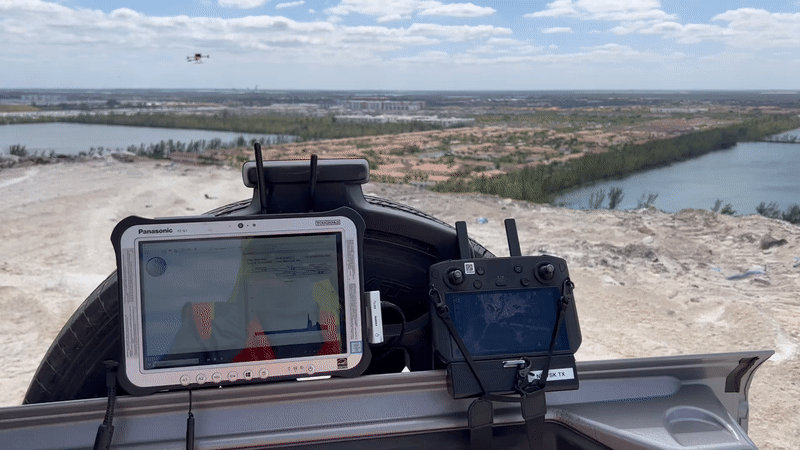
The scope of landfills creating renewable natural gas
Landfills can be a great way to generate biogas and RNG revenue and provide a substantial alternative to gas from fossil fuels. The EPA shows in Figure 2 that there are currently over 60 landfill RNG projects ongoing in the US.
To this end, accurate monitoring should be the focus to maintain a close watch on lost methane. Unquantified emission rates could result in thousands of dollars of potential revenue lost each day, so special attention choosing an appropriate monitoring strategy is needed.
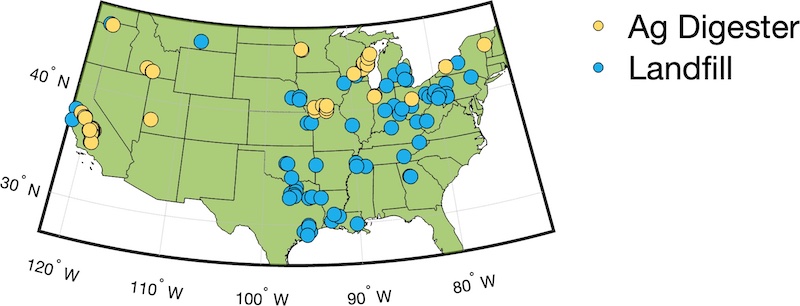
Landfills in the US emit around 4.4 million metric tons of methane (GHG Inventory, pp ES-13). If all of this methane were captured and traded in for RIN credits, this would amount to almost $10 billion USD per year. That equates to an average of $8 million USD annually to each of the 1,269 landfills currently operating in the US! Combining these savings with reduced operating costs originating from power generation from on-site RNG would greatly improve landfill operating efficiency in terms of dollars spent.
Why UAVs and highly-accurate sensors are the perfect fit for detecting landfill methane
Weather conditions and surface appearance at landfill sites can change by the minute, which makes accurately localizing methane emissions a difficult task. SeekOps uses UAVs to fly a wide array of patterns that capture the most accurate emissions for that snapshot in time(see Figure 3 for one example of this).

For the TDLAS technology and the SeekOps service teams, there is no methane leak too small or too tall – as the UAV can fly vertical patterns up until methane is no longer observed. In other words landfill sites can benefit by understanding exactly the impact their operations are having on the surrounding environment while also equating that escaped methane to income by way of RIN credits.
Landfills are large and have dynamic topology as new waste is added every day to active disposal sites. An autonomous and repeatable flight program by UAV means sites can be monitored as frequently as the operators see fit.
Accurately understanding emissions will help to make on-site biogas and RNG programs more efficient in the future. By offering a solution that optimizes measurement frequency, spatial resolution, and flexibility, SeekOps’ technology can help landfill sites quantify and capture emissions to improve their environmental footprint and operational efficiency.
Get in touch with SeekOps
SeekOps has ever-growing operations around the world and continues to add more locations across oil & gas and RNG. If you have a landfill operation that could benefit from actionable and accurate methane localization and quantification, reach out today.
